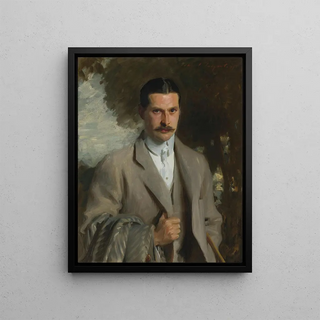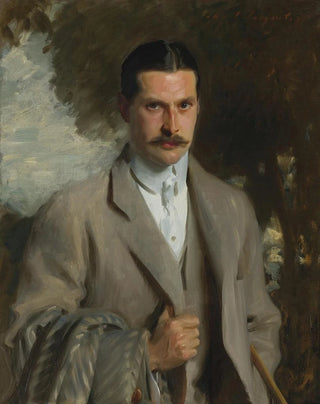Art print | John Ridgely Carter - John Singer Sargent


View from behind

Frame (optional)
In the fascinating universe of art, some works transcend time and space, captivating the attention of enthusiasts and experts alike. The art print John Ridgely Carter - John Singer Sargent is a perfect example, a piece that evokes not only the technical mastery of its creator but also the very essence of the era it represents. This piece, both simple and complex, takes us on a visual journey where each brushstroke tells a story. Contemplating this art print, one feels a deep connection with the artist and his time, an invitation to explore the nuances of color and light that characterize his style.
Style and uniqueness of the work
John Singer Sargent's style is undeniably marked by an impressionist approach, where light and color play a leading role. In this art print, the way he captures reflections and shadows is remarkably delicate. Every detail, whether it be delicate drapery or fleeting expressions, demonstrates meticulous observation and rare artistic sensitivity. Sargent has this unique ability to bring his subjects to life, anchoring them in a space that is both intimate and universal. The composition, harmonious throughout, invites the viewer to ponder the story and emotions hidden behind the depicted face. Thus, this work does not merely depict a frozen moment; it evokes a dynamic, an interaction between the subject and the environment, making the experience of contemplation all the more immersive.
The artist and his influence
John Singer Sargent, an emblematic figure of early 20th-century painting, marked his era with his boldness and virtuosity. Born in 1856, he navigated between European and American influences, establishing himself as a renowned portraitist. His work was praised for his ability to capture the essence of the personalities he painted, while incorporating elements of daily life. Sargent inspired many artists, leaving an indelible mark on the art world. His technique, combining precision and fluidity, paved the way for new explorations in the representation of human figures. By rediscovering

Matte finish

View from behind

Frame (optional)
In the fascinating universe of art, some works transcend time and space, captivating the attention of enthusiasts and experts alike. The art print John Ridgely Carter - John Singer Sargent is a perfect example, a piece that evokes not only the technical mastery of its creator but also the very essence of the era it represents. This piece, both simple and complex, takes us on a visual journey where each brushstroke tells a story. Contemplating this art print, one feels a deep connection with the artist and his time, an invitation to explore the nuances of color and light that characterize his style.
Style and uniqueness of the work
John Singer Sargent's style is undeniably marked by an impressionist approach, where light and color play a leading role. In this art print, the way he captures reflections and shadows is remarkably delicate. Every detail, whether it be delicate drapery or fleeting expressions, demonstrates meticulous observation and rare artistic sensitivity. Sargent has this unique ability to bring his subjects to life, anchoring them in a space that is both intimate and universal. The composition, harmonious throughout, invites the viewer to ponder the story and emotions hidden behind the depicted face. Thus, this work does not merely depict a frozen moment; it evokes a dynamic, an interaction between the subject and the environment, making the experience of contemplation all the more immersive.
The artist and his influence
John Singer Sargent, an emblematic figure of early 20th-century painting, marked his era with his boldness and virtuosity. Born in 1856, he navigated between European and American influences, establishing himself as a renowned portraitist. His work was praised for his ability to capture the essence of the personalities he painted, while incorporating elements of daily life. Sargent inspired many artists, leaving an indelible mark on the art world. His technique, combining precision and fluidity, paved the way for new explorations in the representation of human figures. By rediscovering






